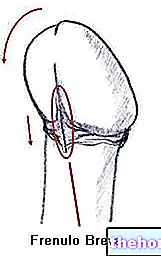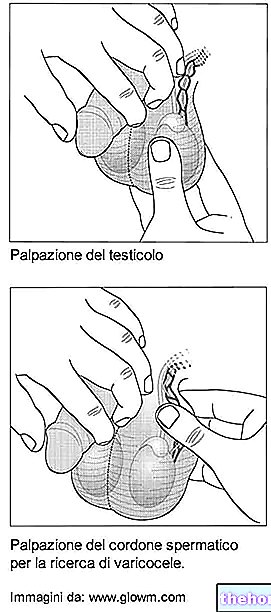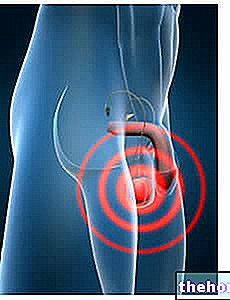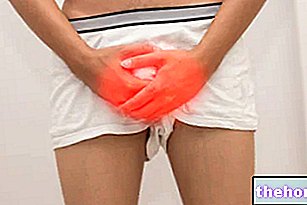Generality
In the medical field, when we talk about small testicles, we generally refer to a particular condition called testicular hypotrophy.
This condition is characterized by a decrease in the volume of the testicles which, therefore, become smaller.

Characteristics of the Testicles
The testicles are male reproductive organs contained in the scrotal sac and responsible for the production of spermatozoa and sex hormones; therefore, they play a fundamental role both in the development of primary and secondary sexual characteristics, and in the control of the entire genital apparatus and in the fertility of the individual.
As an indication, the measurements of the testicles considered to be of normal size can fluctuate between three and five centimeters, for a volume of about 14-25 ml. When, on the other hand, the size of the testicles is lower than the aforementioned range of values, then we can speak of small testicles.
However, it should be noted that in healthy individuals, the testicles decrease in volume with advancing age, but this is not to be considered a pathological condition, but a normal physiological consequence of aging. In this regard, it is estimated that the mean testicular volume of a 70-75 year old individual is about 30% lower than the mean testicular volume at a young age.
Therefore, the small testicles do not always delineate the presence of some pathology or dysfunction, and it is therefore necessary to discriminate between the two conditions. In fact, when there are pathological conditions that affect the size of these male organs, it is usually preferable to speak of testicular hypotrophy rather than small testicles.
In any case, for any doubts it is always good to ask for the advice of your doctor.
Causes
Testicular hypotrophy can be caused by factors of different origins and nature, which can range from infections, whether bacterial or viral, up to circulatory disorders.
Indeed, it would be more correct to define small testicles - or rather, testicular hypotrophy - as a symptom that can be caused by several underlying pathological conditions.
Among these pathological conditions, we remember:
- Male hypogonadism;
- Varicocele;
- Orchitis;
- Mumps;
- Gonorrhea;
- Syphilis;
- AIDS;
- Klinefelter syndrome;
- Testicular torsion;
- Testicular cancer.
Furthermore, the abuse of alcohol and / or drugs, as well as the intake of anabolic steroids, can also lead to the development of testicular hypotrophy.
Finally, testicular hypotrophy can also represent one of the side effects deriving from anticancer chemotherapy and radiotherapy.
Symptoms and Complications
As mentioned, when there is an underlying pathological condition, the small testes are one of the symptoms of this same condition.
In any case, when testicular hypotrophy arises, this represents a clear sign of the suffering of the organs in question, which can lead both to reduced spermatogenesis, with consequent infertility, and to a decrease in the production of steroid hormones, with consequent reduction of secondary sexual characteristics.
Diagnosis
Usually, testicular self-examination is the first means that can be used to make a diagnosis of testicular hypotrophy, but it is certainly not sufficient.
In fact, if it is suspected that the small testicles may be related in some way to any type of pathology, it is essential to carry out an "adequate medical examination at a professional figure specialized in this" field, such as the andrologist.
In addition to what has just been said, other diagnostic tests can also be used, such as, for example, spermiculture, spermiogram (seminal fluid test) and blood tests to determine the levels of hormones in the circulation.
Treatment
Unfortunately, there are no treatments or pharmacological therapies capable of curing testicular hypotrophy. Eventually, the doctor treating the patient may decide to prescribe hormone replacement therapy to compensate for the lack of sex hormone production caused by the testicular hypotrophy itself.
Naturally, in the event that testicular hypotrophy is caused by underlying pathologies, it is also necessary to intervene with a therapy aimed at treating the latter.




























